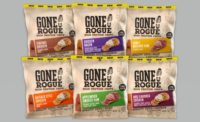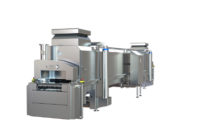An Innovative Process
Andy Hanacek
J.C. Gonzalez-Mendez discusses with The National Provisioner McDonald’s recent product initiatives and the supply chain’s role in innovation.
Q: Talk about the uniqueness of the innovation process at McDonald’s, and how McDonald’s keeps the betterment of the system at the forefront, even when competing suppliers are involved in innovation.
A: It is extremely unique. Innovation at McDonald’s, while it may be spurred by one of our suppliers, is always shared with the other suppliers. It is part of the makeup of our relationship based on trust and mutual respect. There is a lot of pride that goes with being the creator of any particular innovation. At McDonald’s, though, it is common to have one supplier that has developed a product go and visit other plants to make sure that other suppliers are making the [McDonald’s] product up to spec. This is probably the most difficult thing for most people to grasp. Paul Newman, one of our suppliers today, actually described it years ago as “a strange, but beautiful relationship.”
Q: It obviously isn’t always the easiest thing to have competitors come together and work to address issues. Can you expand upon this “strange, but beautiful” partnership that McDonald’s fosters?
A: It is not uncommon to have [suppliers] sitting at the table and talking about the quality of our hash browns together, for example. Somebody might have the brightest idea to improve it, and once they do, the other suppliers will get the information. We always put the system first — the greatest benefit to the greatest number of restaurants
Q. Was the rollout of the Snack Wrap line extensions less of a challenge because the supply-chain infrastructure already existed from the Original Snack Wrap?
A:Certainly. But the credit should go to our Menu Management team. Anytime we produce a product using ingredients that are already in our restaurants, it is easier for the Supply Chain team. But there is a reason why Menu Management does not report to Supply Chain, and it’s precisely that they need to be customer-driven. If Menu Management reported to me, we’d be selling what I could source, and that may not necessarily be what the customer is looking for from McDonald’s.
Q: As a result, what do you see as the role of the suppliers in continuing to provide that great quality chicken product?
A: Well, we have two main chicken suppliers [currently]. However, the growth of this business has prompted us to look for alternative sources, and we have already approved two additional suppliers who will join the system this year.
Q: In terms of the breakfast daypart, what has driven McDonald’s to make it a focus in recent years?
A: We own breakfast and have done so since we introduced it more than 30 years ago. Few people know that by 10:30 a.m., we do more business than some of our competitors will do all day long. Protein is a very interesting question for us at breakfast, because it’s really pork today. We are testing a chicken biscuit in several markets, primarily in the South. It’s a Southern-style breaded chicken product that is resonating very well with customers.
Q: But as far as pork goes, it’s pretty much status quo with the McGriddles and sandwiches?
A: No, there is never status quo at McDonald’s. We’re also exploring sweet goods at breakfast, to compliment our great-tasting Premium Roast Coffee. So we believe we can pair the coffee with sweet goods. Today, we have Cinnamon Melts in about 10,000 restaurants in the U.S. The Cinnamon Melt is a new, sweet treat giving customers the best part of the cinnamon roll — the center. We sell them not only at breakfast, we sell them all day. Additionally, a lot of our emphasis on breakfast over the last few years has been to open earlier or close later, because our customers are moving a lot more today than they used to. They’re up a lot earlier and out a lot later, so our business has expanded because we’ve expanded our hours of operation.
Q: Speaking of the new Premium Coffee, how does its development offer a great example of the innovation process at McDonald’s?
A: We had more than 60 different blends of coffee around in our restaurants around the country. Coffee is a very temperamental product. Everybody thinks they know their coffee, so many of our restaurants had started to migrate away from the standard. It was time to bring it back to where we needed it to be, with the help of our customers, our suppliers and the franchisees on the Food Improvement Team. We learned that our customers wanted a richer, bolder cup of coffee, as evidenced by some of their purchases of other brands. We deliver that, and a whole lot more. Now, McDonald’s customers can get their favorite breakfast menu items and a cup of Premium Roast Coffee without paying a premium price, in one convenient place. We also try to think of small things to save our customers’ time or provide added convenience. In most of our 13,700 U.S. restaurants we now even add the cream and sugar to orders of our Premium Roast Coffee.



Report Abusive Comment